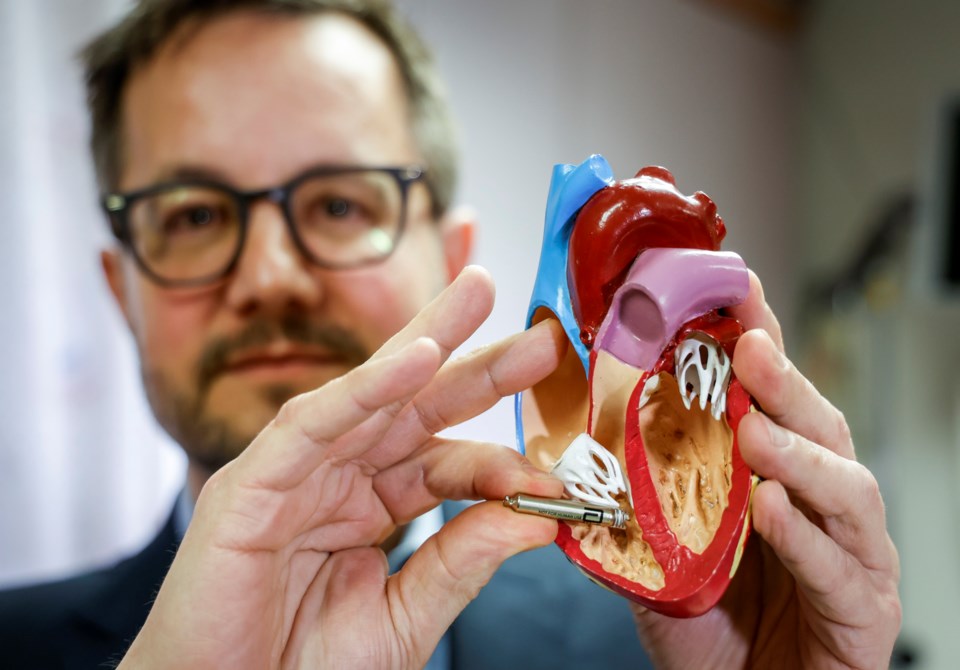CALGARY — Gord Kirk knew that he needed a pacemaker.Â
The Calgarian said his heart would slow down to about 30 beats a minute, he could feel the time between each beat, and he would often grow faint if he was sitting down and stood up too quickly.
A week before Kirk was to receive one of the 200,000 pacemakers installed in Canada each year, he was asked if he would like to try a new innovative miniaturized pacemaker developed in part by a Calgary cardiologist. A pacemaker keeps a person's heartbeat from going too slow and helps regulate heart rhythm by sending a tiny electrical signal, causing it to beat.Â
"It's magic," said Kirk, who is 69.
"This is my first one and for needing a pacemaker, I love it. It sits in the base of my heart and I don't know that it's there."
The new device is leadless, meaning it doesn't have wires connecting it to a person's bloodstream and then to their heart. It received Health Canada approval last year.Â
The Foothills Medical Centre in Calgary is to become a training centre for physicians to provide the technology to future patients.
"The approval is a game-changer in cardiovascular care and improved care for Canadians," said Dr. Derek Exner, a cardiologist and heart rhythm specialist. He is also an associate dean of Innovation and Commercialization at the University of Calgary's Cumming School of Medicine.
"The device is all internal. It's out of sight, out of mind and a lot of the patients we see in followup don't remember why they came to see us."
The first implantation of the leadless pacemaker took place in Calgary in November 2020.Â
Exner led Canadian and Australian teams involved in a decade-long international study and clinical trials evaluating the effectiveness of the device. Foothills Medical Centre was one of 55 locations worldwide, including three in Canada.
The leadless pacemaker is about 3.8 centimetres long, which is less than the size of a AAA battery.Â
Exner said it's easier to implant and replace, and has a battery life of more than 15 years. It's inserted through a small incision in the groin and guided into the right lower heart chamber.Â
He said probably five to 10 per cent of those receiving pacemakers would benefit from the new device.
"There are patients who have issues with blood vessels in the upper arms where you can't put a regular pacemaker in and their only alternative would be open heart surgery," Exner said.
"The other is patients who have a high risk of infection, so regular pacemakers have about a one per cent risk of infection and these have about a ten times lower risk of infection."
A regular pacemaker costs about $2,000. The new miniature version has a heftier price tag of $10,000.
This report by The Canadian Press was first published Feb. 9, 2023Â
Bill Graveland, The Canadian Press




